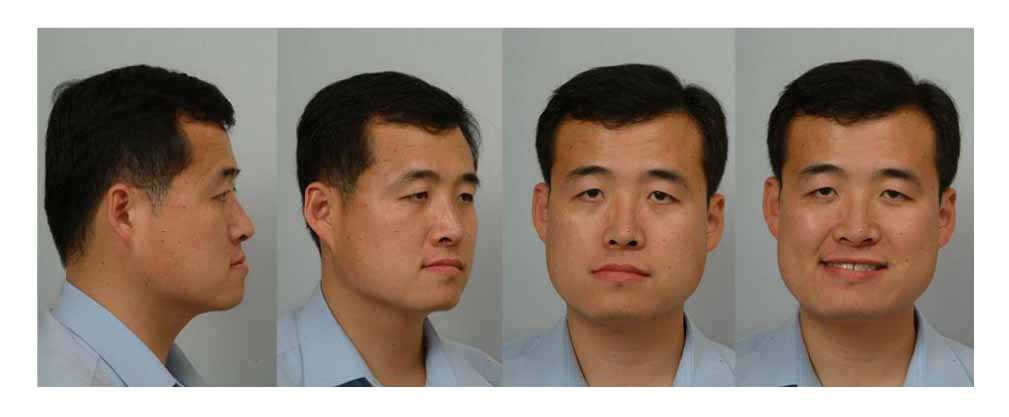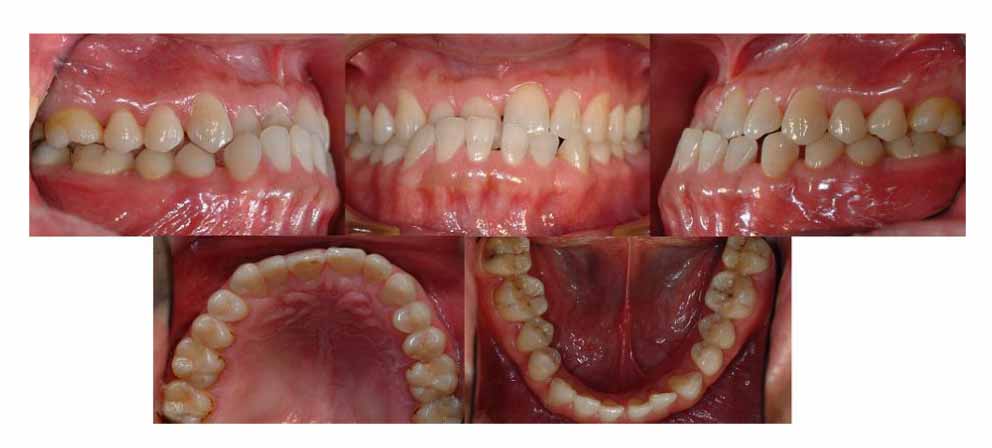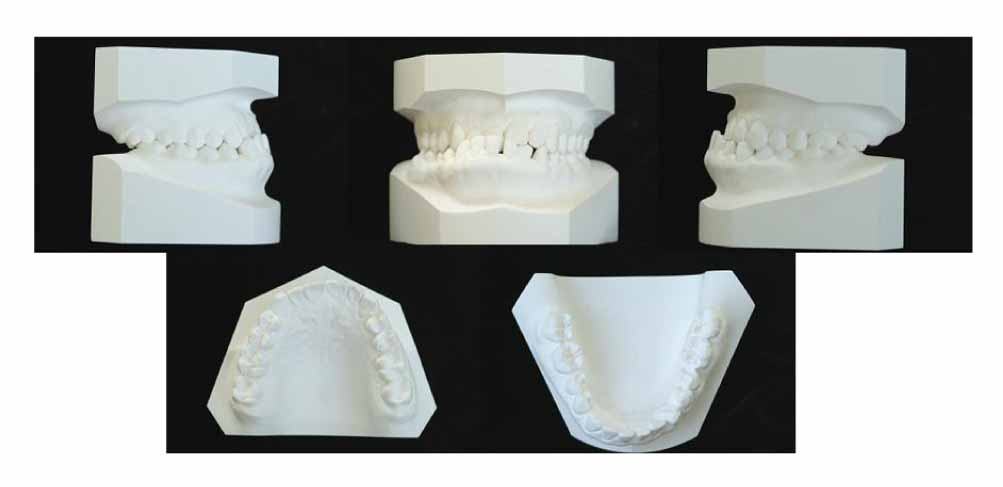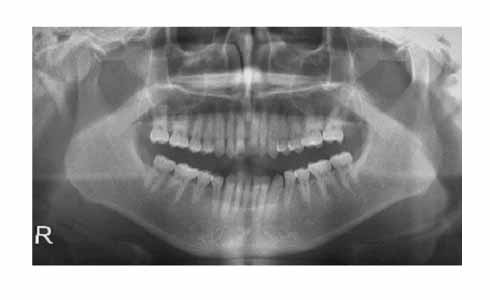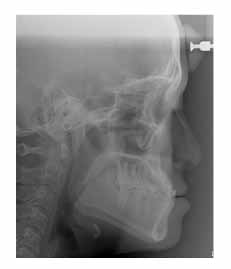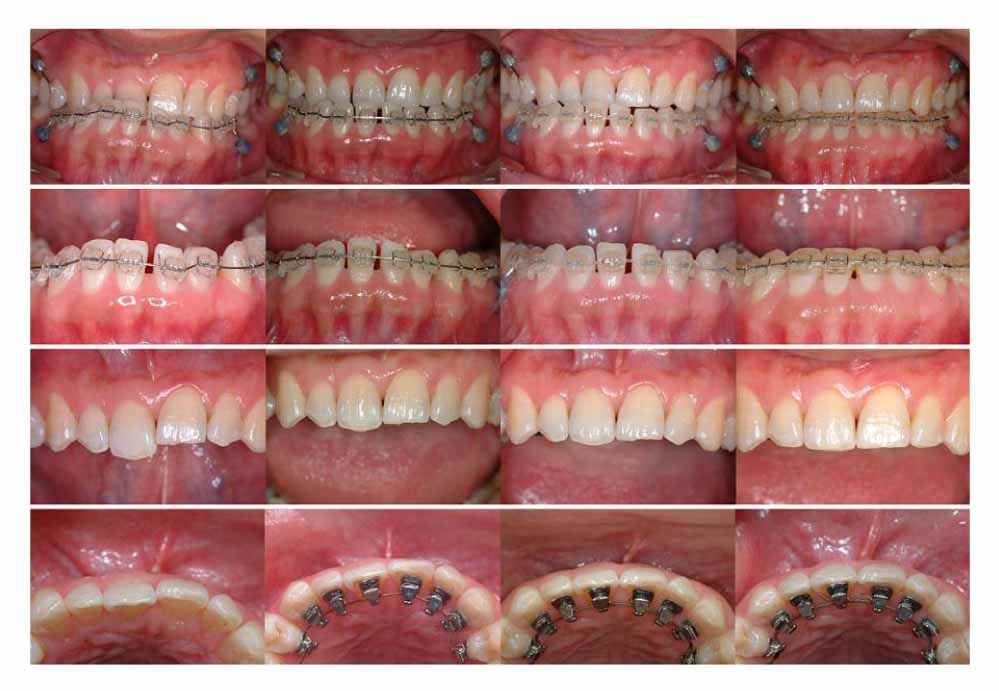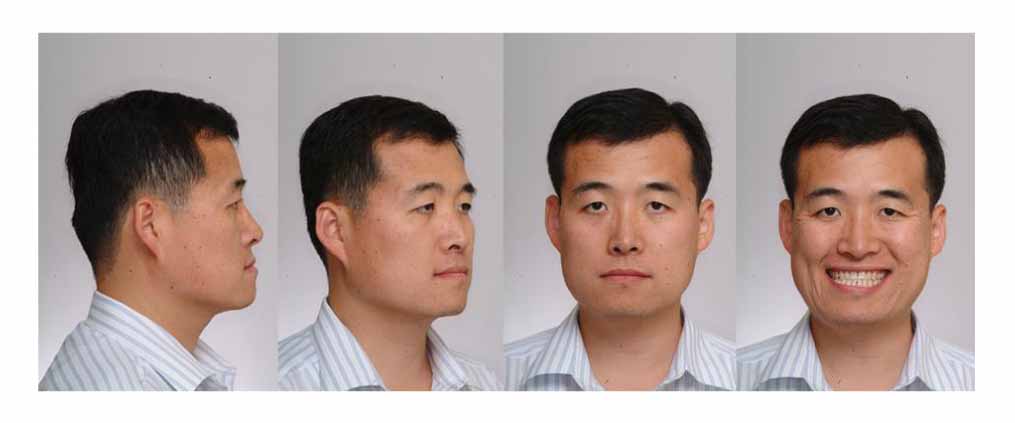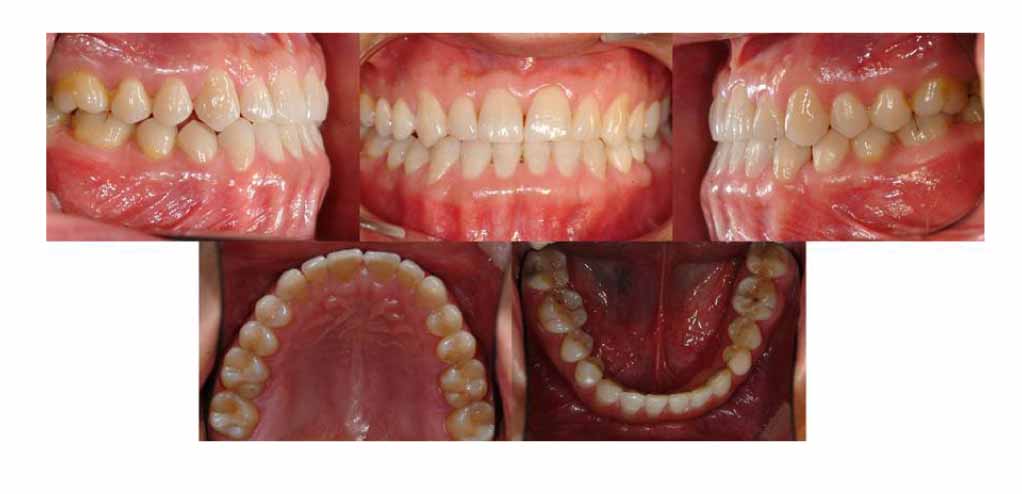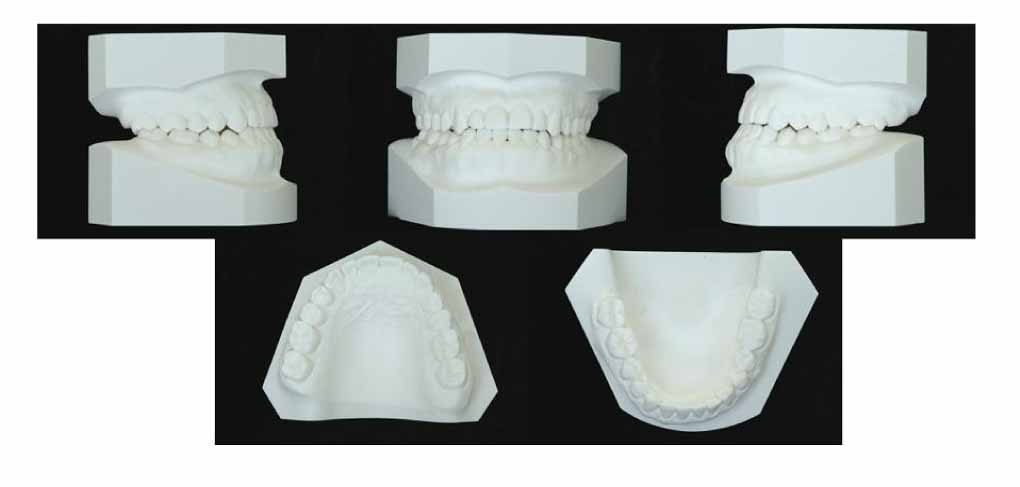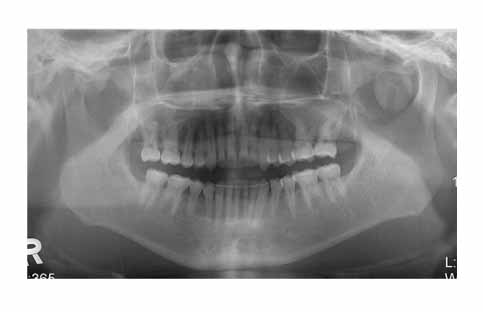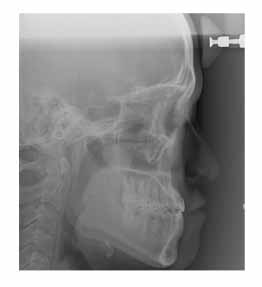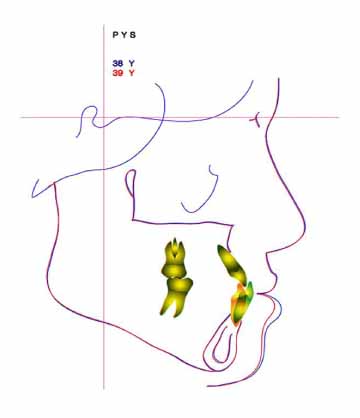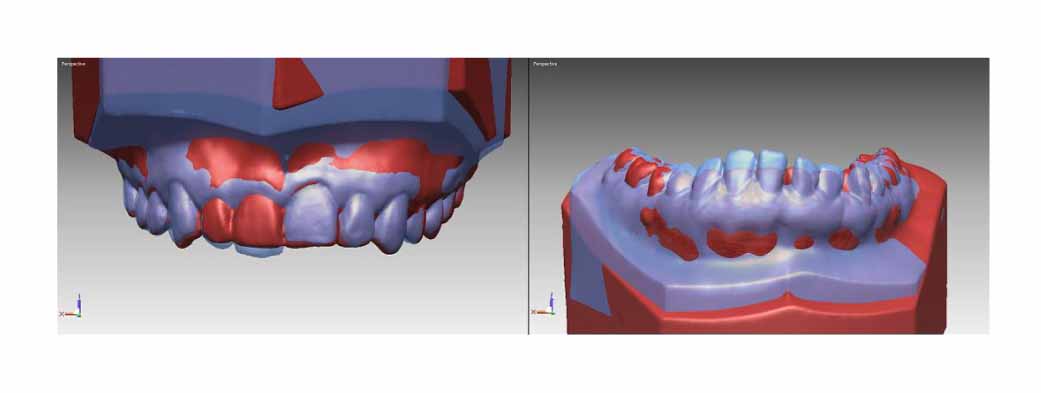Korean J Orthod.
2008 Feb;38(1):60-67. 10.4041/kjod.2008.38.1.60.
Class III nonsurgical treatment using indirect skeletal anchorage: A case report
- Affiliations
-
- 1Division of Orthodontics, Department of Dentistry, Ewha Womans University Mokdong Hospital, Korea. yschun@ewha.ac.kr
- 2Department of Orthodontics, School of Dentistry, Seoul National University, Korea.
- KMID: 1481506
- DOI: http://doi.org/10.4041/kjod.2008.38.1.60
Abstract
- Treatment of adult patients with Class III malocclusion frequently requires a combined orthodontic and surgical approach. However, if for various reasons, nonsurgical orthodontic treatment is chosen, a stable outcome requires careful consideration of the patient's biologic limitation. This case presents the orthodontic treatment of an adult with a Class III malocclusion, which was treated nonsurgically using indirect skeletal anchorage.
MeSH Terms
Figure
Reference
-
1. Popp TW, Gooris CG, Schur JA. Nonsurgical treatment for a Class III dental relationship: A case report. Am J Orthod Dentofacial Orthop. 1993. 103:203–211.
Article2. Proffit WR. Contemporary orthodontics. 1986. St Louis: Mosby;200–207.3. Stellzig-Eisenhauer A, Lux CJ, Schuster G. Treatment decision in adult patients with Class III malocclusion: orthodontic therapy or orthognathic surgery? Am J Orthod Dentofacial Orthop. 2002. 122:27–38.
Article4. Graber TM. Orthodontics, principles and practice. 2005. Philadelphia: Saunders;128–130.5. Kanomi R. Mini-implant for orthodontic anchorage. J Clin Orthod. 1997. 31:763–767.6. Costa A, Raffainil M, Melsen B. Miniscrews as orthodontic anchorage: A preliminary report. Int J Adult Orthodon Orthognath Surg. 1998. 13:201–209.7. Park HS, Bae SM, Kyung HM, Sung JH. Micro-implant anchorage for treatment of skeletal Class I bialveolar protrusion. J Clin Orthod. 2001. 35:417–422.8. Celenza F, Hochman M. Absolute anchorage in orthodontics: Direct and indirect implant-assisted modalities. J Clin Orthod. 2000. 34:397–402.9. Jensen AC, Sinclair PM, Wolford LM. Soft tissue changes associated with double jaw surgery. Am J Orthod Dentofacial Orthop. 1992. 101:266–275.
Article10. Enacar A, Taner T, Toroglu S. Analysis of soft tissue profile changes associated with mandibular setback and double-jaw surgeries. Int J Adult Orthodon Orthognath Surg. 1999. 14:27–35.11. Chew MT. Soft tissue and hard tissue changes after bimaxillary surgery in Chinese class III patients. Angle Orthod. 2005. 75:959–963.12. Bailey LT, Esmailnejad A, Almeida MA. Stability of the palatal rugae as landmarks for analysis of dental casts in extraction and nonextraction cases. Angle Orthod. 1996. 66:73–78.13. Chang YJ, Lee HS, Chun YS. Microscrew anchorage for molar intrusion. J Clin Orthod. 2004. 38:325–330.14. Yun SW, Lim WH, Chun YS. Molar control using indirect miniscrew anchorage. J Clin Orthod. 2005. 39:661–664.15. Aldo G, Fabiana M, Francesca S, Claudio A. Miniscrew treatment of ectopic mandibular molars. J Clin Orthod. 2003. 37:380–383.16. Park HS, Kyung HM, Sung JH. A simple method of molar uprighting with micro-implant anchorage. J Clin Orthod. 2002. 36:592–596.17. Kyung SH, Choi JH, Park YC. Miniscrew anchorage used to protract lower second molars into first molar extraction sites. J Clin Orthod. 2003. 37:575–579.18. Sam K, Rabie AB, King NM. Orthodontic intrusion of periodontally involved teeth. J Clin Orthod. 2001. 35:325–330.19. Linge BO, Linge L. Apical root resorption in upper anterior teeth. Eur J Orthod. 1983. 5:173–183.
Article20. McFadden WM, Engstrom C, Engstrom H, Anholm JM. A study of the relationship between incisor intrusion and root shortening. Am J Orthod Dentofacial Orthop. 1989. 96:390–396.
Article21. Costopoulos G, Nanda R. An evaluation of root resorption incident to orthodontic intrusion. Am J Orthod Dentofacial Orthop. 1996. 109:543–548.
Article
- Full Text Links
- Actions
-
Cited
- CITED
-
- Close
- Share
- Similar articles
-
- Indirect palatal skeletal anchorage (PSA) for treatment of skeletal Class I bialveolar protrusion
- Maxillary protraction treatment of skeletal Class III children using miniplate anchorage
- Maxillary protraction using skeletal anchorage and intermaxillary elastics in Skeletal Class III patients
- Directional forces using skeletal anchorage for treatment of skeletal Class II div.1 malocclusion
- Two treatment approach to skeletal Class III : A case report on sisters

